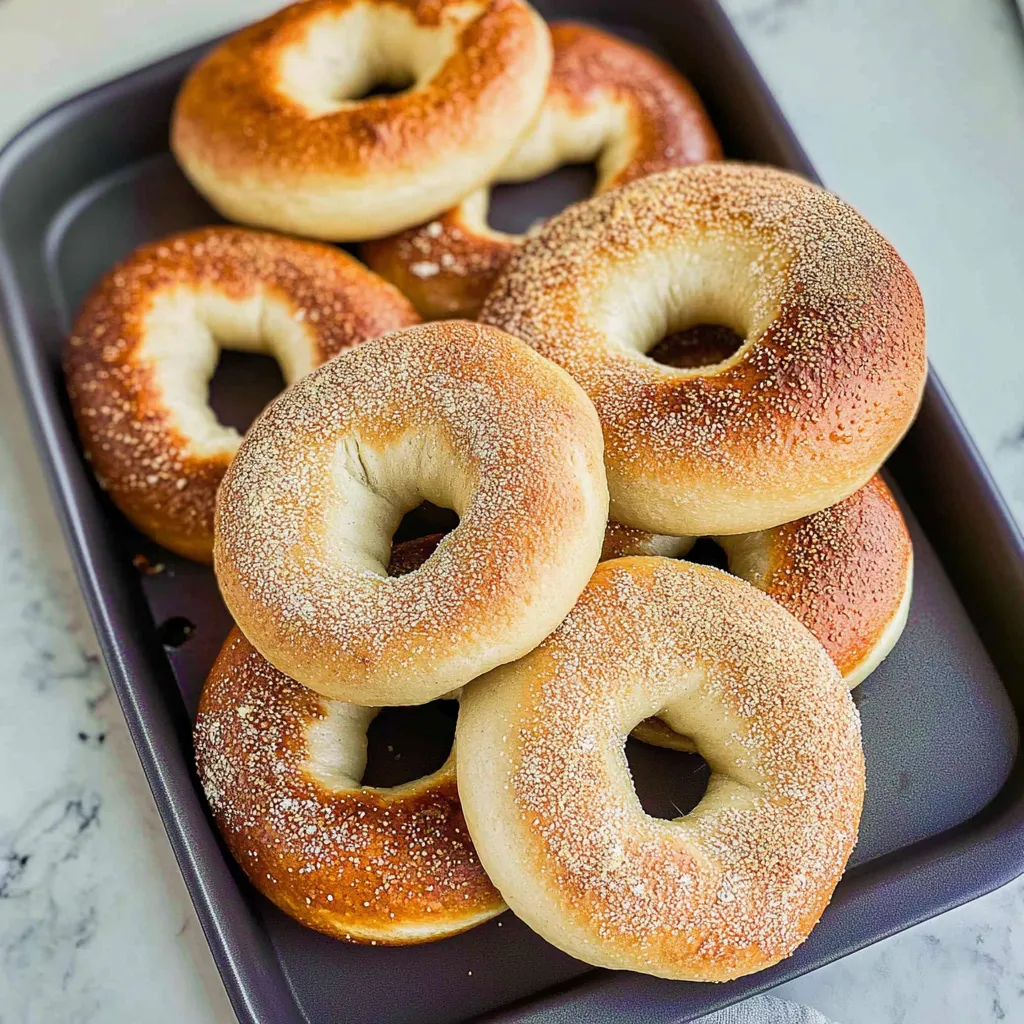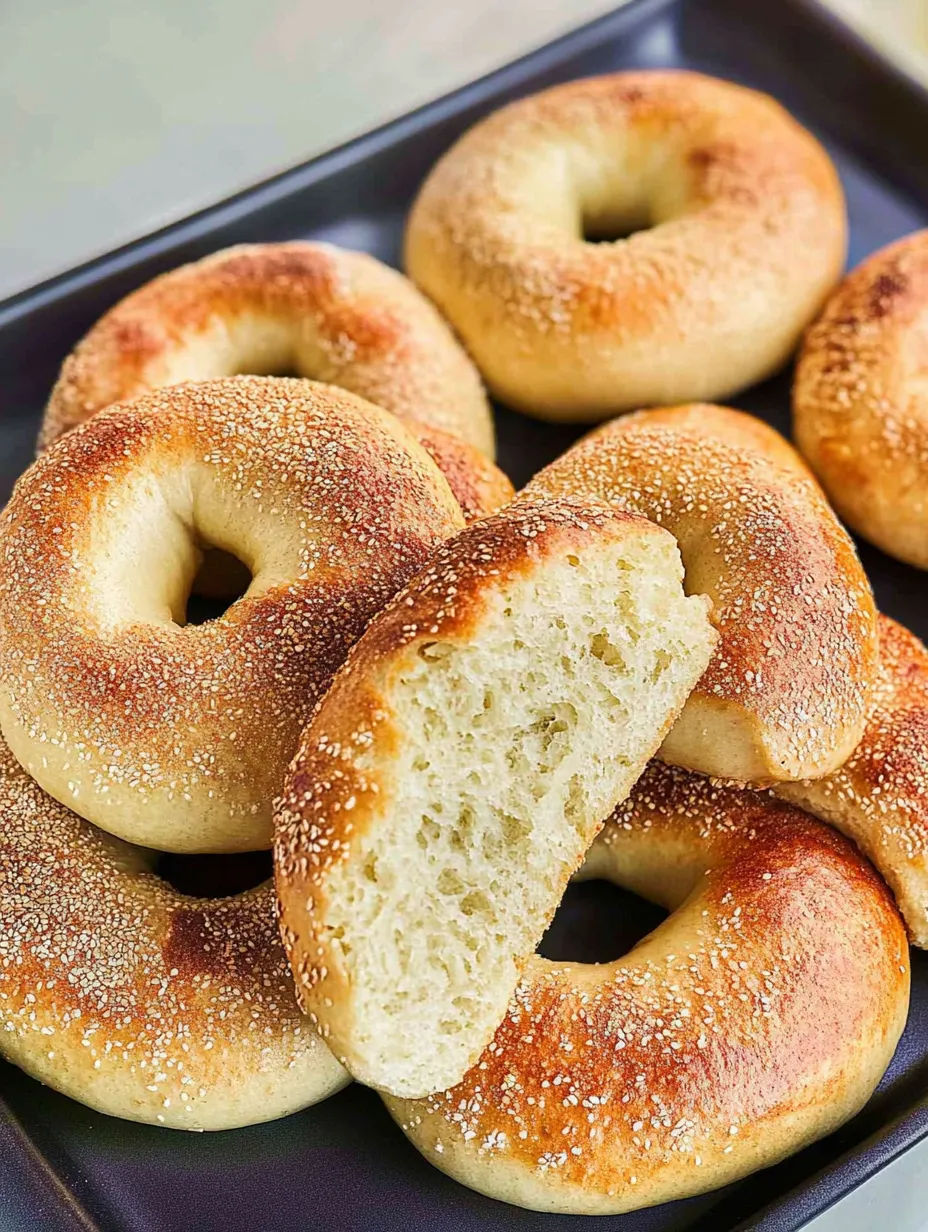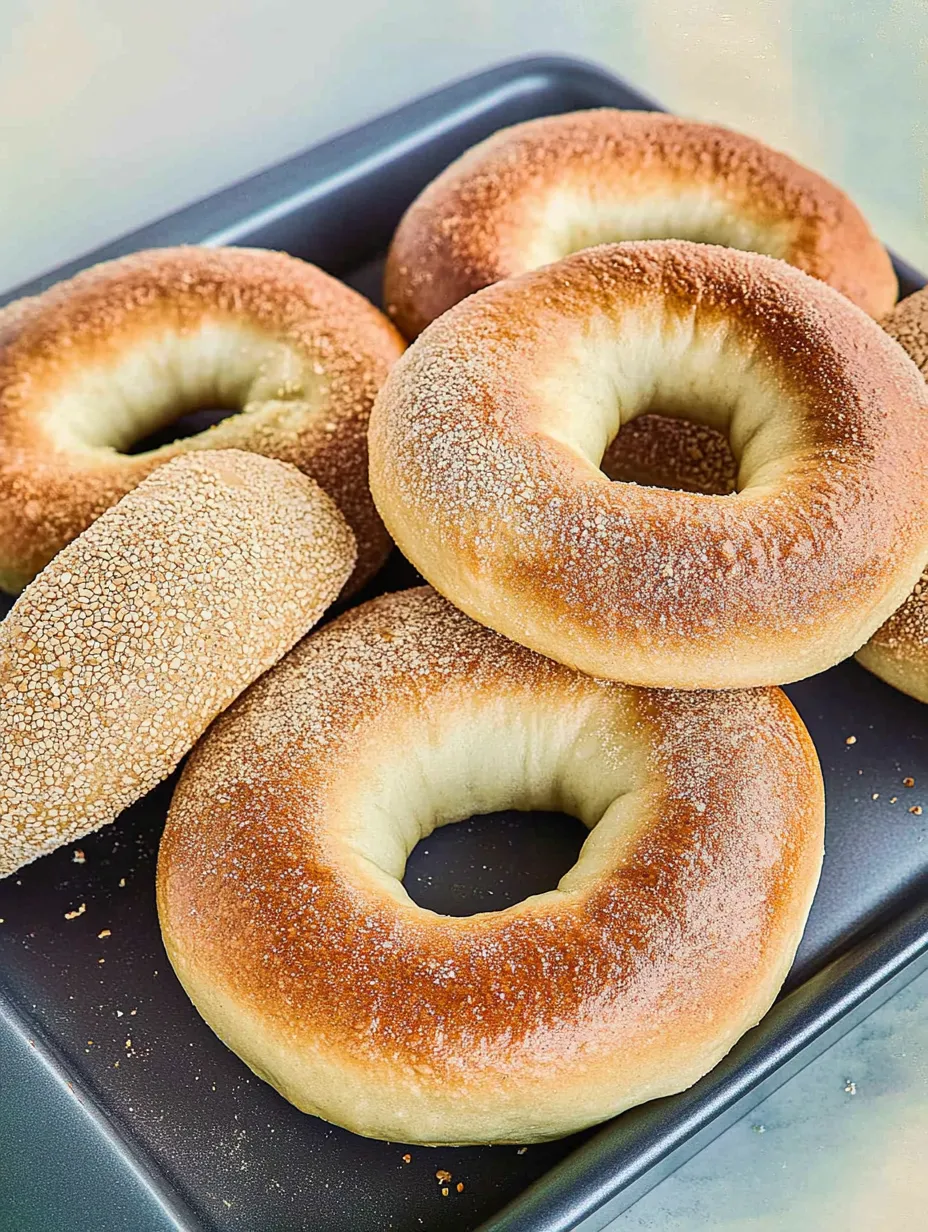 Save
Save
This traditional plain bagel recipe has become my secret weapon for weekend brunches. The magic lies in the overnight refrigeration and molasses boil, creating that signature chewy exterior and soft interior that makes homemade bagels worth every minute of preparation.
I discovered this method after years of disappointing bagel attempts. The first time I pulled these golden beauties from the oven, my kitchen filled with that unmistakable bakery aroma that now signals the start of our weekend family gatherings.
Ingredients
- Bread flour provides the necessary protein content for that perfect chewy texture. Look for unbleached varieties for best results
- Active dry yeast brings the dough to life. Fresh yeast works best, check expiration dates
- Molasses creates the signature dark crust and subtle sweetness. Use unsulphured for cleanest flavor
- Kosher salt enhances flavor development. Morton brand specified for consistent measurement
- Lukewarm water activates the yeast properly. Temperature matters, aim for precisely 110°F
Step-by-Step Instructions
- Prepare the Yeast Mixture
- Combine lukewarm water, tablespoon of molasses, and yeast in a small bowl, whisking until completely dissolved. Allow mixture to rest for exactly 5 minutes until foamy. This activation step ensures proper rising and prevents dense bagels.
- Mix the Dough
- Add flour and salt to stand mixer bowl, then incorporate yeast mixture on low speed until shaggy dough forms. Increase to medium high and knead for precisely 10 minutes. The dough should develop enough gluten to stretch without tearing when pulled between fingers, allowing light to shine through the thin membrane.
- First Rise
- Shape dough into a tight ball, place in clean bowl, and cover completely with plastic wrap. Let rise in warm area until doubled, approximately 60 to 90 minutes depending on room temperature. The dough should feel puffy and airy when gently pressed.
- Shape the Bagels
- Divide dough into precisely 4-ounce portions. Roll each into a smooth ball, then push thumbs through center to create hole. Gently stretch to 4 inches in diameter without flattening. Place on cornmeal dusted baking sheets with 2 inches between each bagel.
- Overnight Rest
- Cover bagels tightly with plastic wrap and refrigerate for 12 to 18 hours. This cold fermentation develops complex flavors and proper texture that distinguishes artisan bagels from quick versions. The dough will puff slightly during this time.
- Boil in Molasses Water
- Bring water to rolling boil in large pot, adding molasses until water turns dark brown. Boil bagels 30 seconds per side. The molasses creates that distinctive bagel flavor and glossy exterior that makes these irresistible.
- Bake to Perfection
- Transfer bagels to preheated pizza stones dusted with cornmeal. Bake at 450°F for 15 to 19 minutes, rotating halfway through, until golden brown and shiny. Cool completely on wire racks to set the structure properly.

The overnight refrigeration step was my greatest discovery when perfecting this recipe. I once skipped it when short on time and the difference was remarkable. That cold rest allows the yeast to slowly work its magic, creating complex flavors that simply cannot be rushed.
Proper Kneading Technique
Kneading develops the gluten structure that gives bagels their characteristic chew. Whether using a stand mixer or hand kneading, the window pane test is essential for determining readiness. Pull a small piece of dough between your fingers until thin enough for light to pass through without tearing. If it tears immediately, continue kneading. This step creates the foundation for perfect bagels and cannot be rushed or shortened.
Troubleshooting Common Issues
Bagels that flatten during boiling usually indicate underdeveloped gluten from insufficient kneading. Dense bagels typically result from improper yeast activation or inadequate rising time. Ensure your water temperature is precisely 110°F when activating yeast. Bagels cracking during baking suggests insufficient moisture during proofing. Keep them tightly wrapped during refrigeration to prevent drying out. For bagels that are too pale, increase baking time by 2 minute increments and ensure your oven is properly preheated with pizza stones.
Creative Serving Suggestions
While these plain bagels shine with just butter, try topping with homemade cream cheese whipped with fresh herbs and lemon zest. For a savory breakfast, split and toast the bagels, then layer with smashed avocado, thinly sliced radishes, and flaky sea salt. Create mini sandwich platters for brunch gatherings with various toppings like smoked salmon, capers, and thinly sliced cucumbers. The neutral base of these bagels makes them incredibly versatile for both sweet and savory applications.

Recipe FAQs
- → Why do you refrigerate the bagel dough overnight?
The overnight refrigeration (12-18 hours) is crucial for flavor development through slow fermentation. This cold rise allows enzymes to work gradually, breaking down starches into more complex sugars, creating deeper flavor and improving the bagel's texture and chewiness.
- → What does boiling in molasses water do for bagels?
Boiling bagels in molasses-enriched water serves two important purposes: it gelatinizes the surface starches, creating that distinctive chewy crust, and adds a subtle sweetness and color. The molasses contributes to the beautiful golden-brown exterior and signature shine on the finished bagels.
- → Can I make these bagels without a stand mixer?
Yes! The recipe includes instructions for hand-kneading. Simply mix the dough with a wooden spoon until shaggy, then knead by hand for a full 15 minutes. The key is achieving proper gluten development, which you can test by stretching a small piece of dough until it's thin enough for light to shine through without tearing.
- → How do I know when my bagels are properly kneaded?
Properly kneaded bagel dough should feel flexible and bouncy to the touch. The definitive test is the windowpane test: take a small piece of dough between your fingers and stretch it. If it forms a thin membrane that light can pass through without tearing, your dough is ready. If it tears easily, continue kneading.
- → What's the best way to store homemade bagels?
For short-term storage (up to 4 days), keep bagels in an airtight container at room temperature and toast before eating. For longer storage, slice bagels before freezing in an airtight container for up to 6 months. Frozen bagels can go directly into the toaster without thawing for best results.
- → Do I need a pizza stone to make these bagels?
While pizza stones help achieve an evenly baked bagel with crisp bottoms by providing steady heat distribution, the recipe notes you can substitute a light-colored baking sheet if necessary. The most important elements are the overnight refrigeration and the molasses boiling technique.
